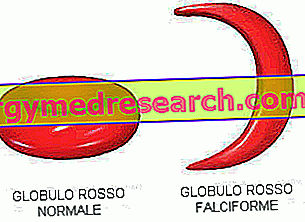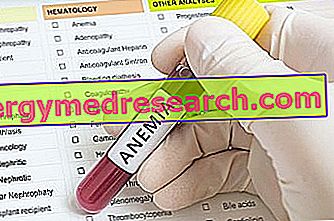Generality Monoclonal gammopathy is a non-cancerous condition, marked by the accumulation, in the bone marrow and in the blood, of an abnormal protein known as paraprotein (or monoclonal protein or M protein). From causes that are still uncertain and very often asymptomatic, monoclonal gammopathy can develop, in some rare cases, into very serious malignancies, such as multiple myeloma or lymphoma
Category blood health
Bone marrow transplantation , also called hematopoietic stem cell transplantation , is the medical-surgical treatment that replaces a bone marrow that is no longer functional with a healthy bone marrow, in order to restore normal blood cell production. Practiced in the event of serious blood diseases (aplastic anemia, lymphomas, leukemias, etc
Bone marrow transplantation , also known as hematopoietic stem cell transplantation , is the medical procedure by which a damaged bone marrow is replaced with a healthy bone marrow , in order to restore normal blood cell production. It is a very delicate, complex treatment that is performed only under certain conditions; among these, we note: an optimal patient's state of health (in spite of the illness that afflicts him) and the impracticability (because ineffective) of any other alternative treatment
Anemia is a disorder caused by the reduction of hemoglobin in the blood. Hemoglobin is directly related to red blood cells, which in turn are an expression of the hematocrit (corpuscular part of the blood). In the case of anemia, the latter may undergo a negative change, confirming the diagnosis. The symptoms of anemia are: asthenia, pallor, tachycardia, fainting, loss of appetite, nausea, dyspnea on exertion, reduction of the ability to concentrate and memory
Symptoms and Complications Sickle cell anemia, like all anemic forms, is accompanied by pallor, asthenia (tiredness and easy fatigue), cold skin (especially at the extremities) and headache. Although sickle cell anemia is present from birth, most newborns have no particular signs or symptoms before the age of four
Generality Microcytic anemia is a hematological disease characterized by the presence of microcytes , that is, red blood cells (erythrocytes) of smaller size than the norm, in peripheral blood. Usually, this situation is substantially superimposed on a pathological reduction of hemoglobin (Hb) below the reference levels
Generality Megaloblastic anemia is a haematological disease characterized by the presence of megaloblasts in the bone marrow and in peripheral blood. In erythropoiesis (line of differentiation and maturation of the red blood series), megaloblasts are large erythroid precursors . A marked increase ( megaloblastosis ) is indicative of an altered DNA synthesis , classically secondary to a deficiency of vitamin B12 or folic acid
Generality Mediterranean anemia (or beta-thalassemia ) is an inherited blood disorder . The patients who are affected have a lower amount of red blood cells than the norm , with defects in the synthesis of hemoglobin (Hb, the protein responsible for transporting oxygen). More in detail, Mediterranean anemia is due to the altered production of one or more of the four protein chains (globins) that make up Hb
Generality Anisocytosis means a condition characterized by the presence of red blood cells (or erythrocytes) of various sizes in the peripheral blood. This haematological alteration is frequently associated with some forms of anemia , but may also depend on numerous other pathologies or physiological situations
Generality An embolus is any insoluble foreign body circulating in the blood, capable, if it reaches an artery or vein of its own size, of blocking the blood flow in the same way as a stopper. The nature of an embolus can vary enormously; in fact, emboli can be: abnormal blood clots, fat lumps, lumps of amniotic fluid, air bubbles, cholesterol crystals, talc granules, tissue portions, splinters, etc
Generality Hemosiderin is an iron-depositing protein that can be dosed by taking small tissue samples (biopsy). Hemosiderin alterations assume a predictive value for the diagnosis of various pathologies, including: chronic infections, stable or old heart disease, iron deficiency anemia and liver cirrhosis











